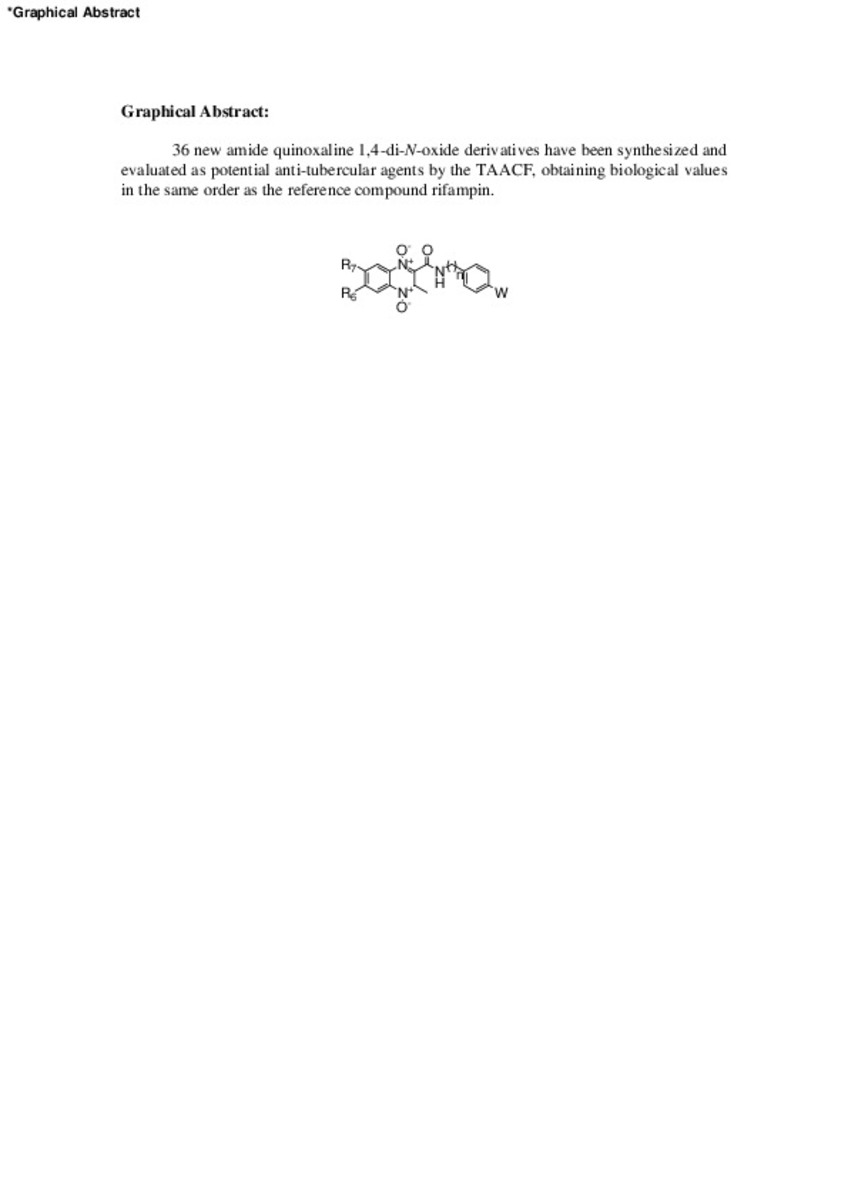New 3-methylquinoxaline-2-carboxamide 1,4-di-N-oxide derivatives as anti- Mycobacterium tuberculosis agents.
Keywords:
Rifampin
Mycobacterium tuberculosis
Quinoxaline 1,4-di-N-oxide
Anti-tuberculosis agents
Project:
RIDIMEDCHAG-CYTED and PIUNA project from University of Navarra. We also wish to express our gratitude to the Tuberculosis Antimicrobial Acquisition & Coordinating Facility (TAACF) for the evaluation of the anti-tuberculosis activity through research and development contracts. S.A.
Citation:
Ancizu S, Moreno E, Solano B, Villar R, Burguete A, Torres E, et al. New 3-methylquinoxaline-2-carboxamide 1,4-di-N-oxide derivatives as anti-Mycobacterium tuberculosis agents. Bioorg Med Chem 2010 4/1;18(7):2713-2719
Statistics and impact
0 citas en

0 citas en

Items in Dadun are protected by copyright, with all rights reserved, unless otherwise indicated.










